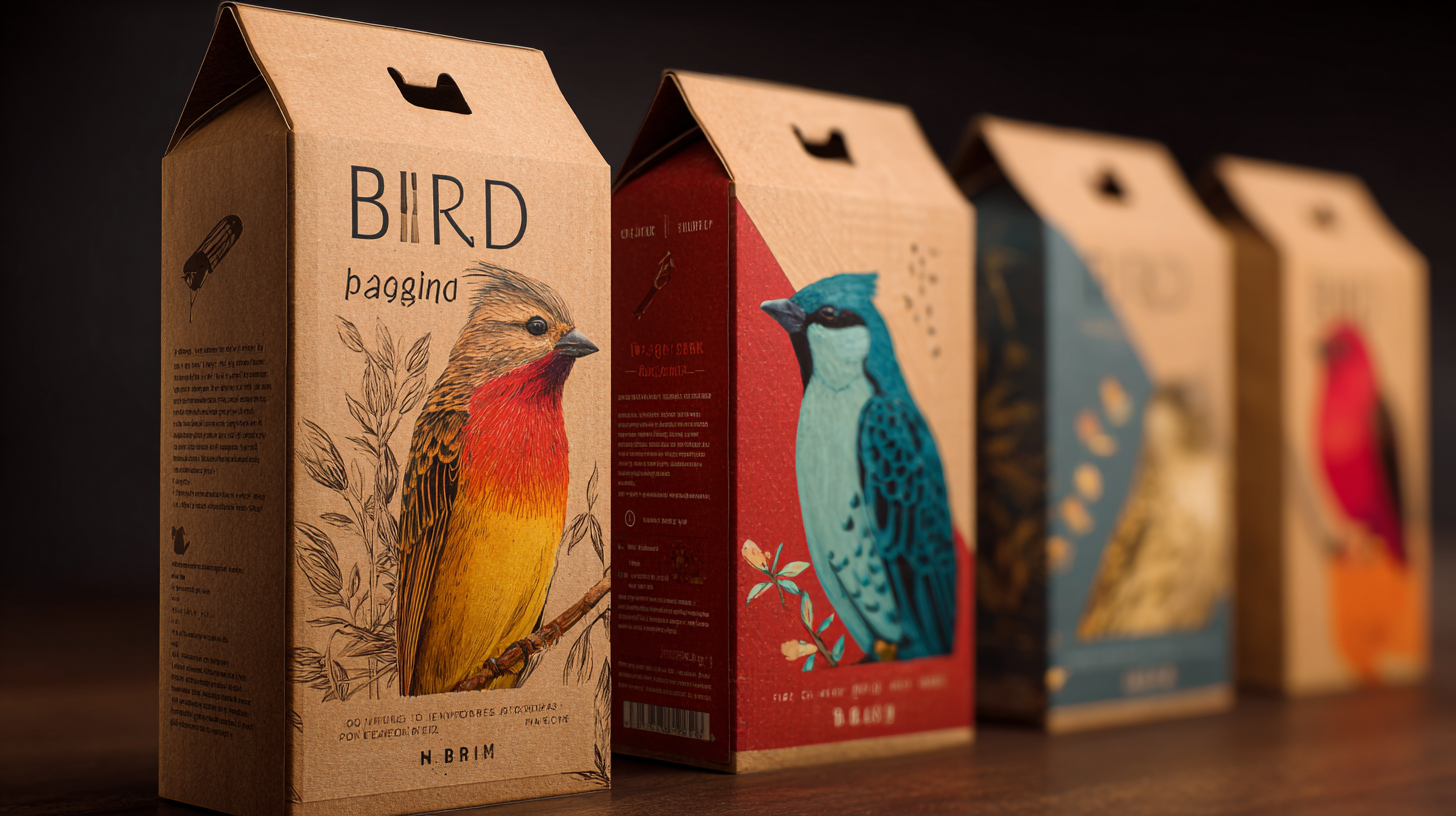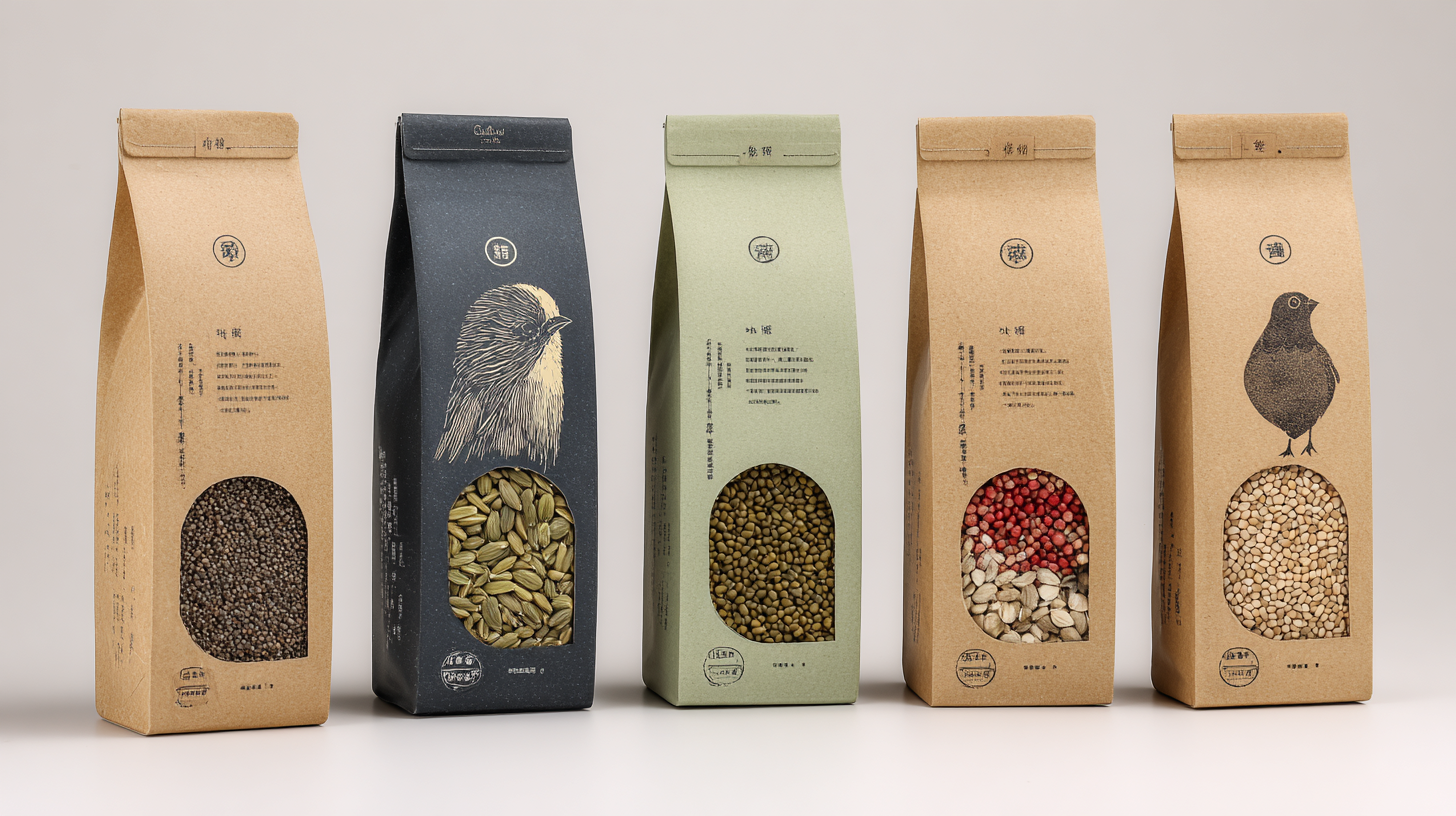How to Choose the Best Bird Food Packaging to Maximize Freshness and Sales
In the competitive landscape of the avian feed market, selecting the right Bird Food Packaging is critical for maintaining product freshness and maximizing sales. According to a recent report from the Pet Food Institute, over 40% of pet food consumers prioritize packaging that enhances product longevity, indicating a growing demand for innovative solutions in bird food packaging. Additionally, a study by MarketsandMarkets forecasts that the global market for pet food packaging is set to reach $16.85 billion by 2025, driven by a rising awareness of the importance of packaging integrity in preserving quality and freshness. As bird owners become increasingly discerning about the products they purchase, investing in specialized packaging that not only protects but also promotes the nutritional value of bird food has become imperative for manufacturers aiming to boost their market presence and customer satisfaction.

Understanding the Importance of Bird Food Freshness in Sales Success
Freshness is a crucial factor influencing consumer purchasing decisions in the bird food market. According to a recent study by the Association of Avian Products (AAP), over 70% of bird owners prioritize freshness when selecting food for their pets. This emphasis on quality means that bird food retailers must adopt effective packaging solutions that preserve freshness and appeal to discerning customers. High-quality, resealable packaging can significantly extend shelf life by minimizing exposure to air and moisture, which are critical factors that degrade product quality over time.

Moreover, the financial implications of freshness cannot be overlooked. Research conducted by Market Insights Group indicates that products labeled as "fresh" see a sales boost of up to 45% compared to competitors with standard packaging. Investing in advanced packaging technologies such as vacuum sealing or nitrogen flushing can not only maintain the integrity of bird food but also enhance brand loyalty. Retailers that prioritize product freshness through thoughtful packaging strategies are more likely to enjoy increased sales and a stronger market presence in this competitive sector.
Key Features to Look for in Bird Food Packaging Material
When it comes to selecting bird food packaging that maximizes both freshness and sales, there are several key features to consider. First, the material should provide an airtight seal to prevent moisture from compromising the food quality. This is essential, not only for retaining freshness but also for prolonging shelf life, which directly impacts sales. Additionally, packaging that is easy to reseal allows customers to store the product without worrying about spoilage.
Another critical aspect is the sustainability of the packaging material. With growing awareness of environmental issues, consumers are increasingly looking for eco-friendly options. Biodegradable or recyclable materials offer a compelling selling point, appealing to eco-conscious buyers. Consider options that minimize chemical additives, as these can pose risks to both health and the environment. Choosing packaging that reduces plastic waste is not only environmentally friendly but can also enhance your brand's image.
**Tips:**
- Look for packaging that includes transparent windows or features, allowing customers to see the product while still offering protection.
- Prioritize materials that align with your sustainability goals, as this will resonate strongly with today’s consumers.
Bird Food Packaging Materials Freshness Retention
Comparing Different Bird Food Packaging Manufacturers for Quality
When selecting bird food packaging, one of the most crucial steps is to compare different manufacturers to ensure quality and freshness. Quality packaging not only preserves the nutrients in bird food but also protects it from environmental factors like moisture, light, and air, which can lead to spoilage. Manufacturers using high-grade materials such as multilayer films or vacuum-sealed bags tend to offer superior protection, extending the product's shelf life and enhancing its appeal to consumers.
Additionally, sustainable packaging options are becoming increasingly important in the bird food industry. More consumers are seeking eco-friendly choices that minimize environmental impact. Comparing manufacturers’ commitment to sustainable practices can provide valuable insights into their overall product quality and market positioning. Brands utilizing recyclable or biodegradable materials can attract environmentally conscious customers, driving sales and fostering brand loyalty. Ultimately, choosing the right manufacturer not only influences the freshness and longevity of the bird food but also enhances the product's marketability in a competitive landscape.
Innovative Packaging Solutions to Preserve Bird Food Freshness
Innovative packaging solutions play a crucial role in preserving bird food freshness and driving sales. The global market for single-use packaging is expanding significantly, with current projections estimating a valuation of over $470 billion by 2026. This growth is driven by increasing demand across various sectors, including pet food. By utilizing materials like plastic, paper, and cardboard, manufacturers can not only ensure product integrity but also enhance shelf life. Recent studies indicate that plastic packaging, particularly due to its moisture resistance, dominates the market share, accounting for approximately 40%, while paper and cardboard follow closely behind with about 30%.
To maximize freshness, consider packaging bird food in resealable pouches or vacuum-sealed bags, which can greatly reduce exposure to air and moisture. Additionally, using packaging that includes desiccants or oxygen absorbers can help maintain product quality over longer periods.
As sustainability becomes a primary concern, the use of eco-friendly materials, such as biodegradable plastics or recycled paper, is gaining traction. Brands can attract environmentally conscious consumers by adopting these innovative solutions while maintaining product freshness. Keeping abreast of industry trends will enable companies to tap into growing markets effectively.
How to Choose the Best Bird Food Packaging to Maximize Freshness and Sales
| Packaging Type | Material | Freshness Duration | Cost Per Unit ($) | Sustainability Rating |
|---|---|---|---|---|
| Resealable Bags | Plastic | 3-6 months | 0.50 | 2/5 |
| Kraft Paper Bags | Paper | 2-4 months | 0.40 | 4/5 |
| Glass Jars | Glass | 6-12 months | 2.00 | 5/5 |
| Plastic Tubs | Plastic | 3-5 months | 1.00 | 3/5 |
| Vacuum-Sealed Bags | Plastic | 6-12 months | 0.75 | 3/5 |
Cost-Effectiveness vs. Packaging Quality: Finding the Right Balance
When selecting bird food packaging, finding the right balance between cost-effectiveness and quality is crucial. According to a 2022 market analysis by Research and Markets, packaging quality can significantly influence consumer purchasing decisions, with 72% of consumers stating that they are willing to pay up to 20% more for products in high-quality packaging. This highlights the importance of investing in durable and resealable materials that can extend freshness while appealing to eco-conscious consumers.

On the other hand, cost considerations cannot be overlooked. A report by Smithers Pira indicates that the global flexible packaging market is forecasted to grow by 4.2% annually, emphasizing the efficient production practices that help reduce costs without compromising quality. Manufacturers must balance this growth by choosing materials that not only maintain the freshness of bird food but also keep production costs low.
Striking this balance ensures that businesses can remain competitive while still appealing to buyers looking for quality assurance in their choices. By focusing on effective packaging solutions, companies can enhance customer satisfaction and boost sales in an increasingly crowded market.

 中国
中国